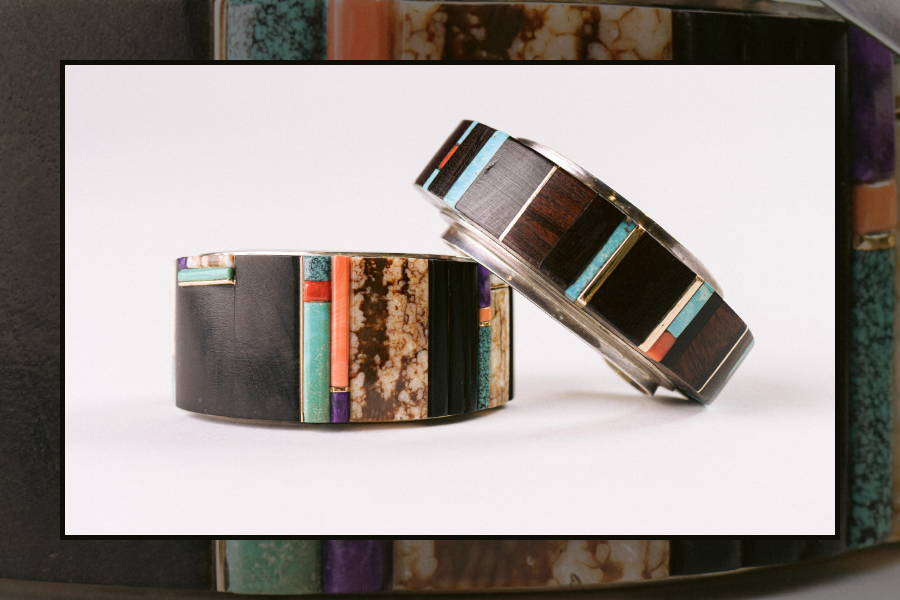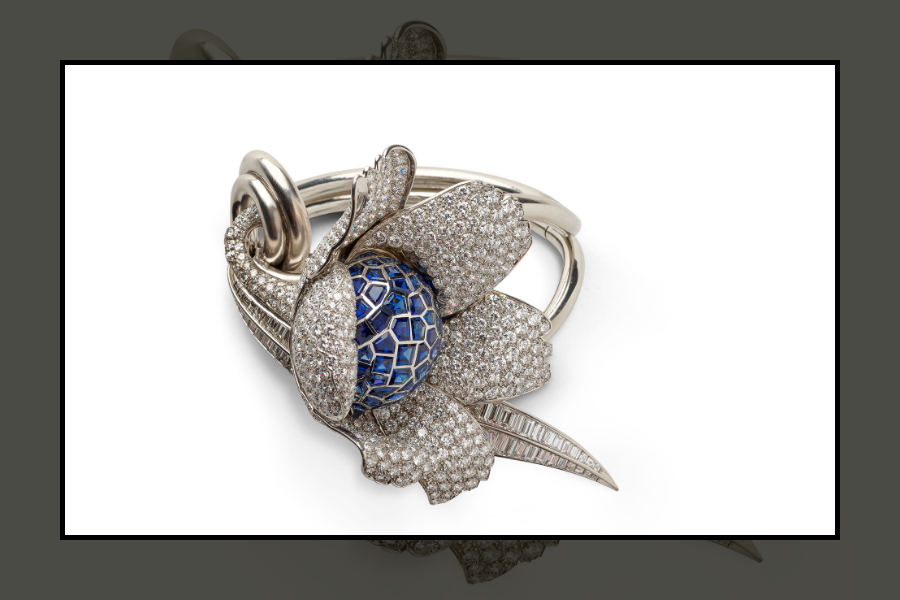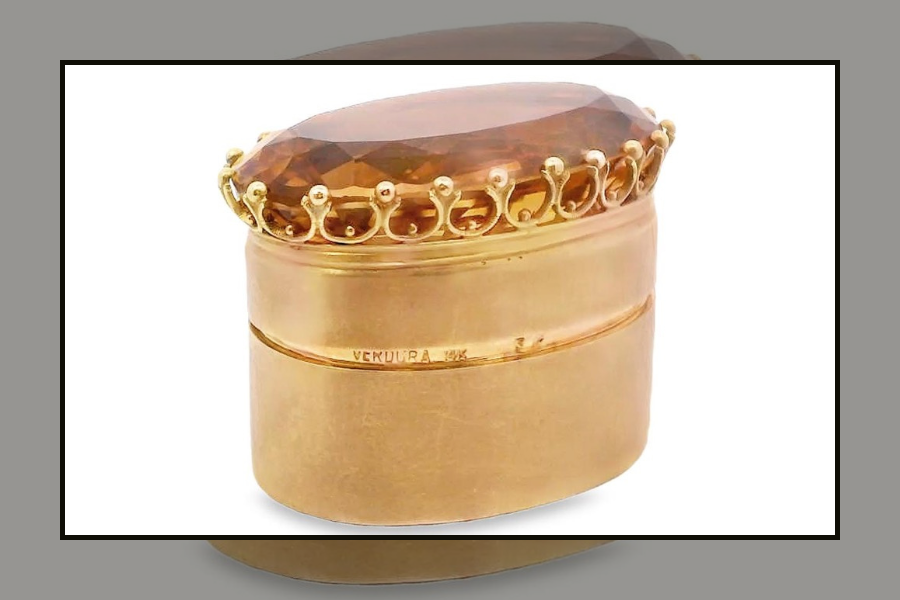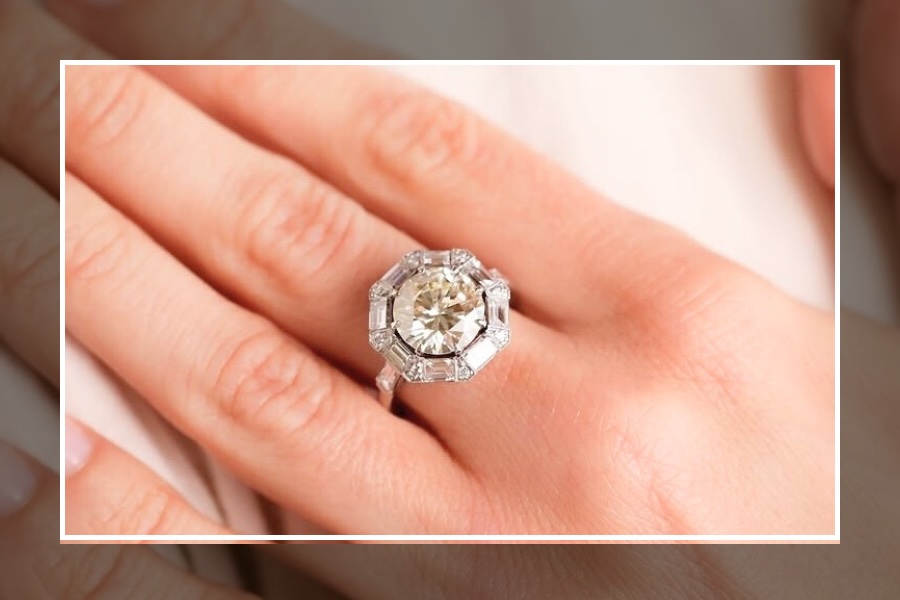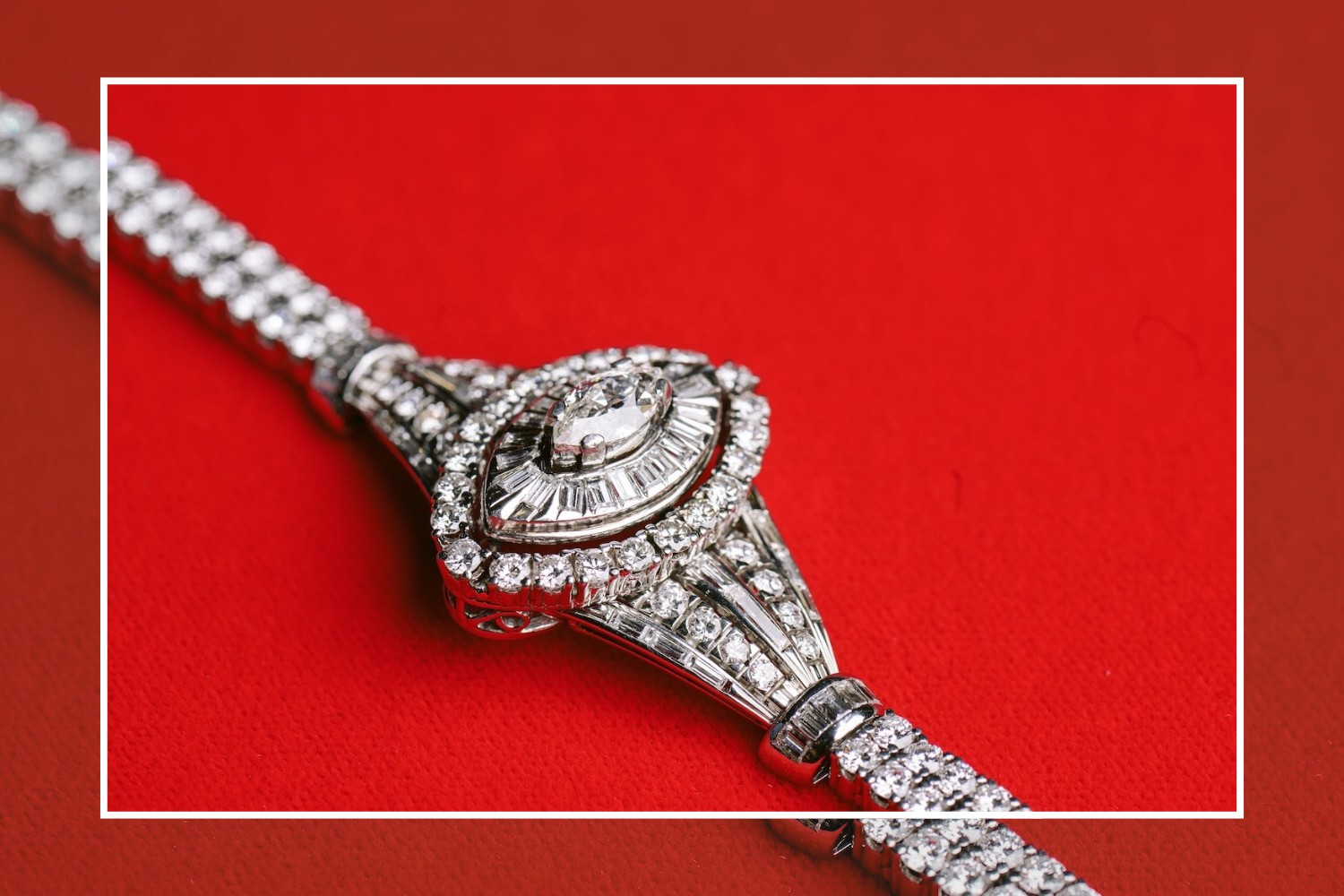Charles Loloma was a jewelry artist who used the stones of the earth to tell stories. He was also, first and foremost, Hopi. Born in the little village of Hotevilla on the Third Mesa in Arizona as a member of the Badger Clan in 1921, he spent most of his life in the same small town as an active member of the community. He studied heritage techniques and ancient cultures and allowed their influences to translate through his own imagination to create wonderfully new innovations. Those deep roots to his people, the land, and spirit, influenced all of his work.
“I felt a strong kinship to stones,” Loloma once said. “Not just the precious and semi-precious stones I use in my jewelry, but the humble stones I pick up at random while on a hike through the hills or a walk along the beach. I feel the stone and think, not to conquer it, but to help it express itself.”
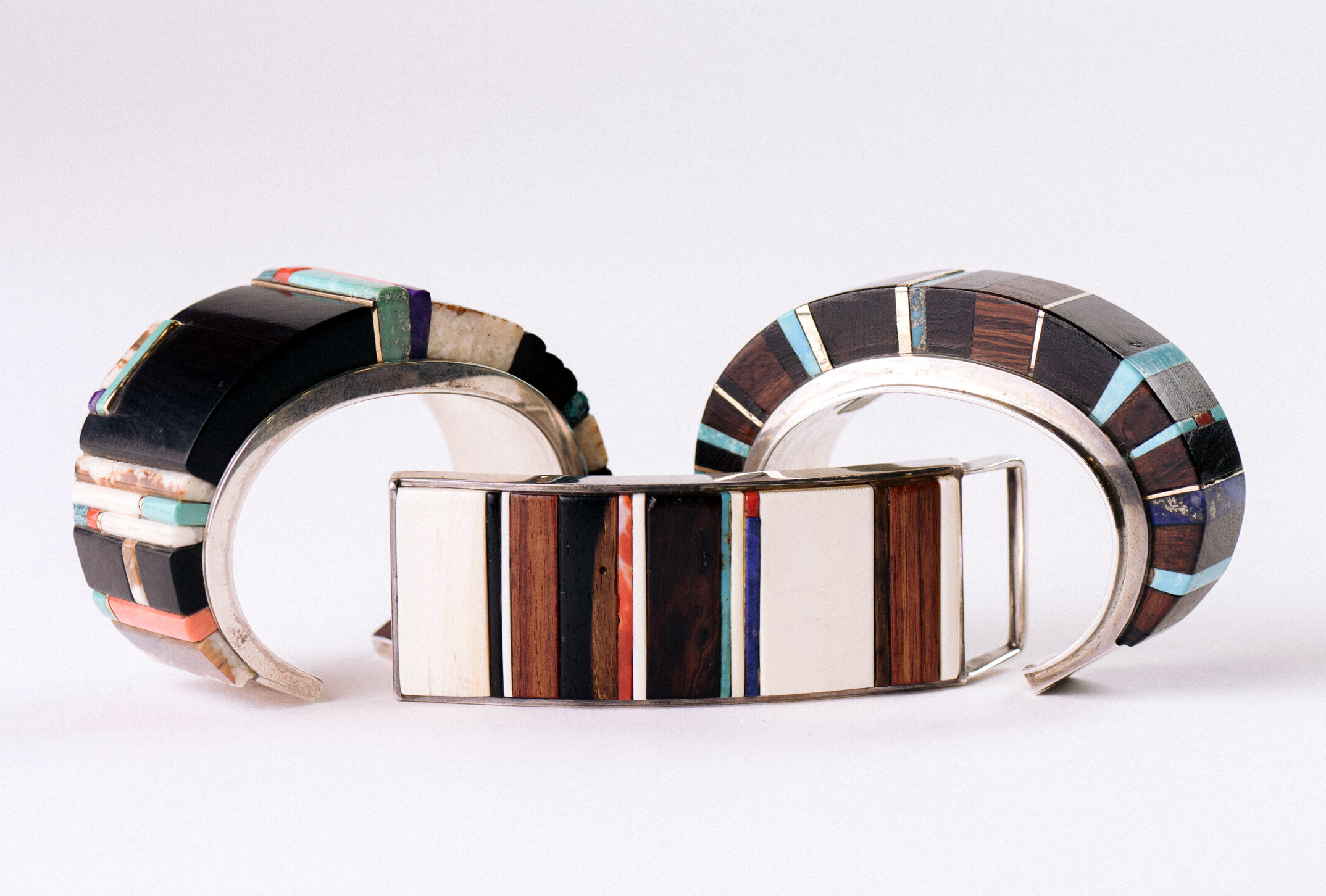
Charles Loloma Pieces from
Douglas M. Liebman Estate Jeweler

Charles Loloma Pieces from
Douglas M. Liebman Estate Jeweler
Loloma began his art career with drawing and apprenticeships in murals while he was still in high school. He served in the military during World War II, studied pottery through a GI bill afterwards, and spent years teaching and running a ceramics shop with his wife. Throughout the rest of his career, he would touch back into those mediums for inspiration, but it was jewelry where he found the best expression for his art.
Loloma worked with traditional Native American materials like silver, turquoise, and coral. He also worked in less traditional materials like ironwood, lapis lazuli, ivory and pearls. He juxtaposed the Hopi geometric designs with non-traditional materials and allowed the stones to lift out of the metal in stacks more familiar in sculptural works. Especially in his earlier years, he was considered “not Indian enough” for the liberties he took with traditional design.
As Loloma put it, “They didn’t realize I was interpreting the depths of Indian vision.”
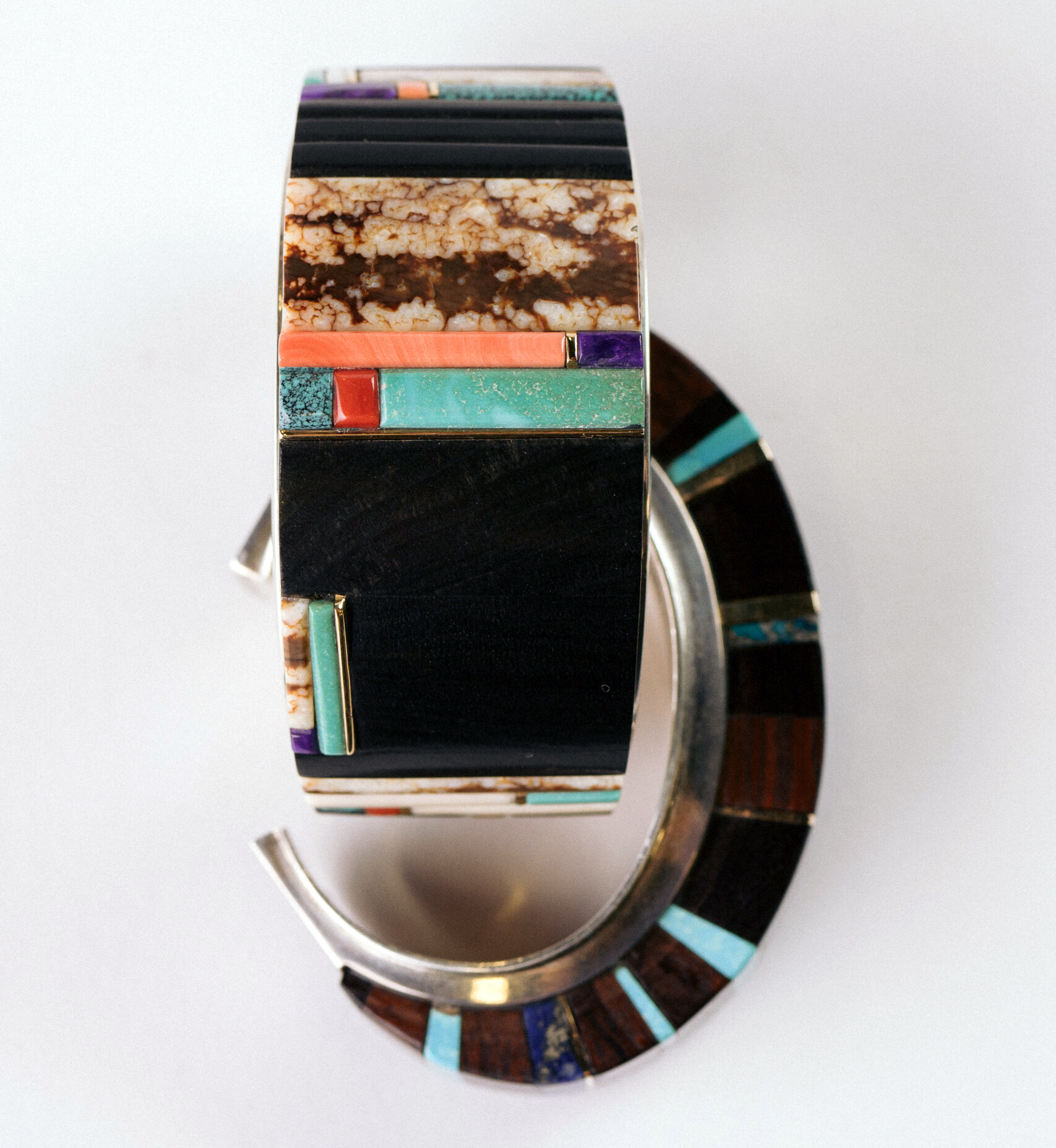
Charles Loloma Pieces from Douglas M. Liebman Estate Jeweler
Loloma’s intimacy and reverence with the materials is evident in his work. And despite his straddling of two worlds – Hopi and the modern art world – his jewelry became internationally known. Hollywood stars, Mrs. Dwight D. Eisenhower and Frank Lloyd Wright’s wife, Olgivanna were clients. In the 1960’s, President Lyndon B. Johnson commissioned pieces to be presented to the Queen of Denmark and the wife of the Philippine president.
Loloma traveled the world but always kept his Hopi spirit well-nourished. He left Paris during the middle of a successful show in 1971 to take part in the Bean Dance. He lived by the Hopi calendar cycles of birth, death, and regeneration. He farmed traditional crops of squash, melon, and corn in the fields behind his studio. Despite the trappings of success he enjoyed, Loloma never lost touch with his muse. He said, “In order to create valid art, you have to be true to yourself and your heritage.”

